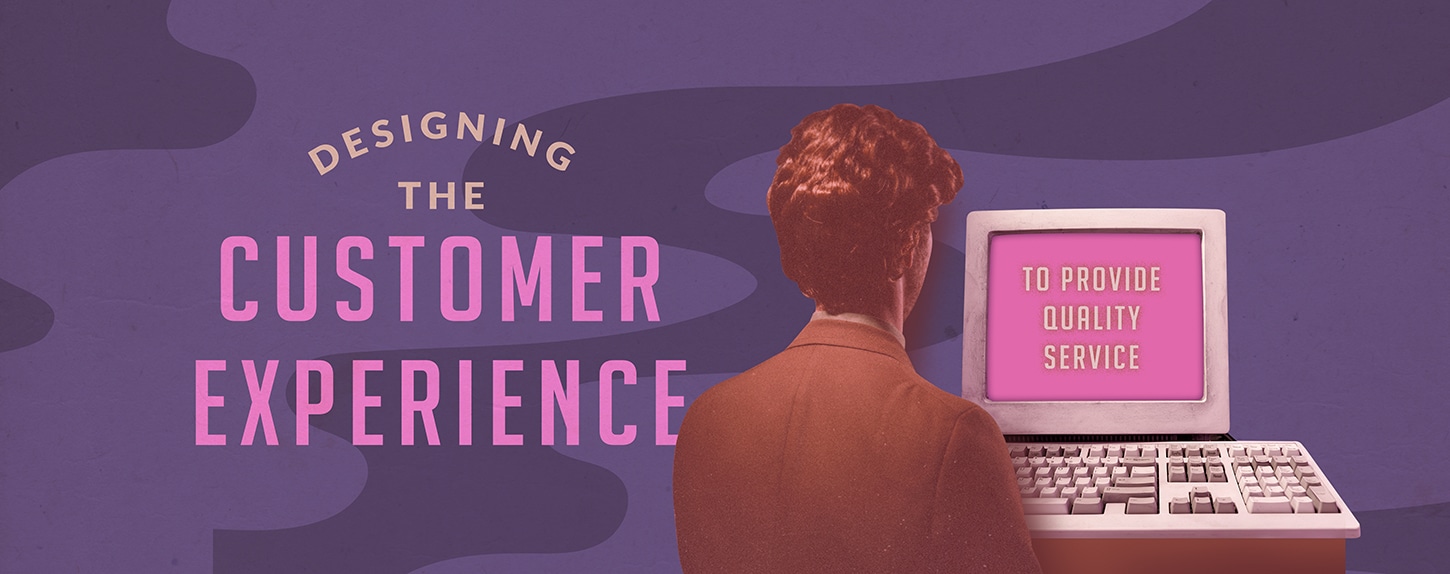Designing the Customer Experience to Provide Quality Service

Design is function. Design is information architecture. Design is prototyping. Design is improving service.
Not many consumers consider the process in which products or services are being built as design, but that process should be a designer’s top priority. All considerations leading up to a visually-designed product is the service design process — often confused for customer experience, or UX.
Customer experience is the focus of how those processes are managed.
Many visual designers get lost in pixels when the focus should be on the audience. Thinking of the audience first allows designers to apply a wayfinding scheme into their wireframes, which therefore applies purpose to the product by guiding the user throughout the site.
What Differs from Service Design and Customer Experience Design?
Service design is very similar to a design sprint, which is a five-step process to…
- understand
- diverge
- converge
- prototype
- test
…designs to help reduce risk in releasing a new product into the marketplace.
In order to provide quality service, designers must seek out a creative vision by conducting research, applying a strategy and applying a prototype after an ideation to determine what opportunity cost a business is willing to pay for an experience.
Customer experience design focuses on the interactions a company has with customers over time. At Frog Design, they use “a relationship framework to help define and evaluate great customer experience. It’s based on three factors: breadth, depth and consistency. Breadth involves many interactions across the end-to-end customer journey. Depth has the quality and meaning behind those interactions. Lastly, consistency: the cohesive feeling and promise driving each interaction.”
Customer Experience Design
The Interaction Design Foundation describes customer experience design as a “customer’s experience with a company or brand at ALL touchpoints.” Touchpoints are ways in which customers interact with products, and how they feel about the brand, business, or service.
Researching the target audience of products via customer journey mapping and personas, allow marketers to identify the experience to prototype, and then test. This data then gives designers constraints, or limitations, in how they frame and market the information in a design. It will also allow brands to understand context and manage expectations of what the customer is going to get out of the information, instead of having it just being displayed on a homepage without a second thought.
Human-Centered Focus Design
Design is a form of function, and customer experience design is a form of customer interaction with products. Both can come together to create what is called a human-centered focus design. Exemplary experience design can be shown or expressed through technology and automation.
Chatbots and digital assistants are great examples of experience design, because they can be programmed in unique ways to solve problems and improve service quality. They will be available when humans are not, allowing customers to feel they are receiving personal care, no matter the hour. Additionally, machine learning can capture and understand what customers are requiring in the process.
As another example, the Echo Dot and other smart devices can be great tools for businesses or even hospitals. Using a hospital as an example, patients could use these devices to vocally journal symptoms, receive medication reminders, stretching instructions, order hospital food, adjust room temperatures, hospital bed settings, and plenty more.
It’s about more than just the surface level care they receive. It’s about the encompassing experience, and that’s really what customer experience design is all about.
Focusing on the entire ecosystem of a consumer’s web experience is essential before beginning to improve service design. Digital ecosystems contain several channels in which businesses can serve customers. These channels can be social media platforms such as Facebook and YouTube, a website, a blog, or even a newsletter. Ultimately, all agencies provide services to their customers, therefore maintaining an outstanding digital customer journey is not only necessary, but should be a requirement.
According to Frog Design’s Creative Director Jared Fink
“Agencies need to collaborate at every point of contact by designing for, prototyping and delivering the experiences and emotions needed to drive results that go above and beyond what the client is expecting. It is important to examine how users are currently existing in their world, in order to design for personalized value…Designing for personalization is designing for customer loyalty, continuous engagement, more value, solving unmet needs, fixing problems, more consistency across touchpoints and a holistic strategy where everything connects is what puts the customer first.”
The personalization aspect is delivered through more than just experience, but also what consumers are thinking and feeling about their environmental surroundings.
Service and customer experience design should be practiced by all companies, but specifically by digital agencies in order to maintain a satisfactory partnership.